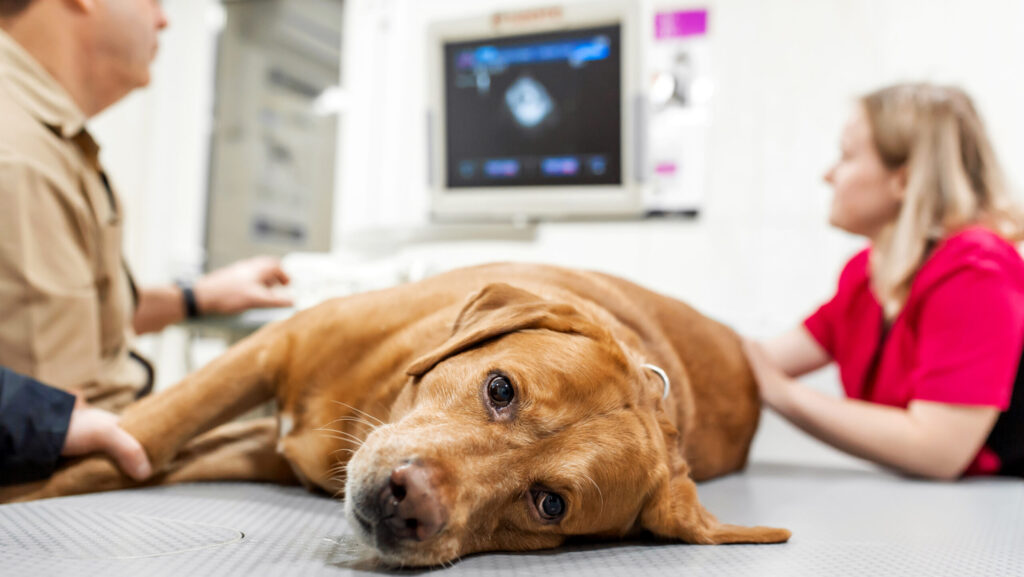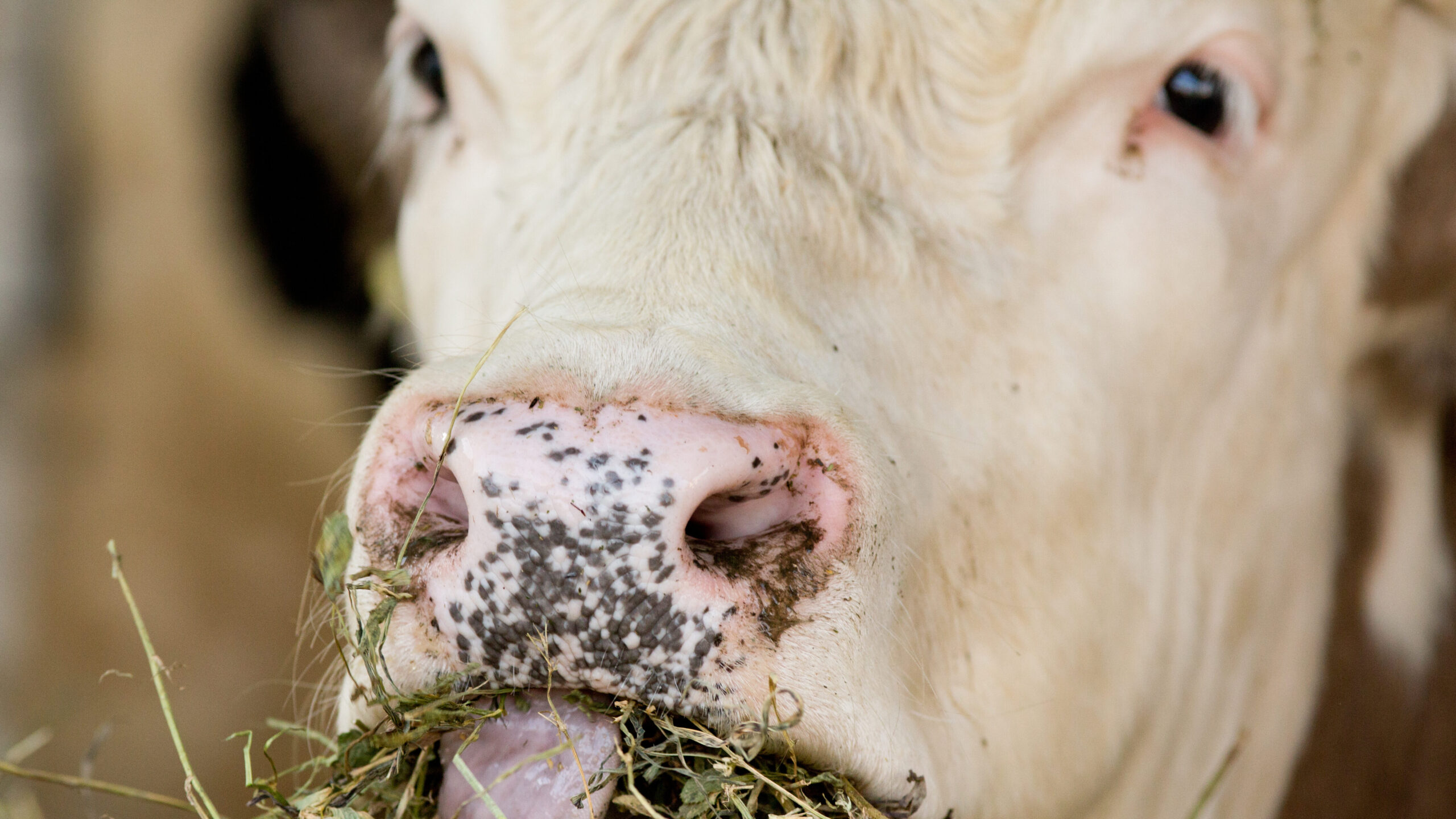Research Roundup January 2025
Careful observations lead to scientific breakthroughs. Whether observing classroom behaviors, cattle interactions, effects of pharmaceuticals or anti-anxiety methods in dogs, each study relies on the innovative leaders at the NC State College of Veterinary Medicine to make informed examinations that propel research forward.

Studying Veterinary Educators Response to Student Emotions in Their Classrooms
Davis R, Kedrowicz A, Moffett J, Zaneb H, Armitage-Chan E.
A recent study including the Department of Clinical Sciences’ Dr. April Kedrowicz explored how veterinary educators experience and respond to students’ positive and negative emotions, which can affect the learning environment. It can be difficult for educators to recognize and appropriately navigate a response to a student’s emotions, especially in a classroom or laboratory setting. Things like curiosity, disappointment over a grade or frustration over understanding a topic are all common student emotions that could affect a classroom. Being able to properly respond and guide students during these times is a necessary tool for educators. The qualitative study, which took place internationally across three institutions, found that educators often feel overwhelmed or anxious when dealing with emotional topics, clinical situations or uncertainty in teaching methods. This can make it harder for educators to support students’ learning, prompting the researchers to suggest that institutions put more support into the development of educator emotional intelligence in order to avoid emotional burnout and fatigue from faculty.
The full study was published in the Journal of Veterinary Medical Education and can be found here.

Exploring Treatments for Dogs with Marijuana Toxicosis
Fitzgerald AH, Zhang Y, Stewart S, Fritz SA, Lynch AM, Ramras M, Meola SD.
As more states have legalized the recreational use of marijuana for humans, cases of canine marijuana toxicosis have also risen. A recent collaborative study, which included NC State Associate Professor of Emergency and Critical Care Dr. Alex Lynch, investigated the potential of flumazenil to improve the condition of dogs affected by marijuana toxicosis. Dogs have more cannabinoid receptors in their brains than humans, which could explain their increased sensitivity to marijuana products. In people, the drug flumazenil is associated with easing the effects of central nervous system depressants like marijuana. However, it has not been studied whether flumazenil could be used to manage THC intoxication in dogs. The study involved observing and treating 17 dogs that presented for marijuana toxicosis by administering flumazenil intravenously and then comparing the assessments from before and after administration using the Canine Marijuana Severity Score. The results of the study concluded that flumazenil could be beneficial for improving the clinical signs of marijuana toxicosis in dogs.
The study was published in Frontiers in Veterinary Science and can be read here.

Using Real-Time Location Systems to Analyze Contact Between Feedlot Cattle
Seger HL, Sanderson MW, White BJ, Lanzas C.
Contact networks and patterns are important resources in studying infectious disease transmission within wildlife populations. A recent study, including Dr. Cristina Lanzas from NC State’s Department of Population Health and Pathobiology, used data from Real-Time Location System Tags to look at how three pens of cattle interacted and behaved in feedlots over a period of three years. Researchers observed from the results that the cattle interactions were frequent, but many of them were brief encounters. Their observations and findings suggest that using high-resolution data can provide a more accurate picture of cattle interactions, which can help improve disease transmission models for cattle in confined environments.
The study was published in Preventive Veterinary Medicine and can be found here.
Reviewing the Effectiveness of Compression Wraps for Anxiety in Domesticated Dogs
Mathis S, Schoolfield S, Gross P, Gruen M, Dorman DC.
It is common for dogs to develop anxiety and react to loud noises like fireworks and thunder. These situations can be difficult for both the pet and owner to manage and de-escalate. There have been many studies examining methods to ease canine anxiety, including the use of pressure wraps. This study, including researchers from the Departments of Clinical Sciences and Molecular Biomedical Sciences, reviewed current veterinary literature to see whether existing evidence supports the use of pressure wraps to reduce anxiety in dogs. After reading through the previous literature, the authors found that pressure wraps are not associated with adverse side effects, but there is limited evidence that they reduce anxiety in dogs.The authors conclude that there needs to be further studies to make reliable and accurate conclusions regarding the use of these products.
The study was published in Animals and can be read here.
Research Connection: Bovine Blocks with Dr. Kelley Varner
Cattle sometimes need surgery out in the field, and using general anesthesia can be dangerous for the animal and for the veterinarian. Dr. Kelley Varner, Assistant Professor of Anesthesia and Analgesia, has been developing a way to keep cows standing for surgery using analgesia (pain management / numbing), making it safer and easier for everyone.
- Categories:


